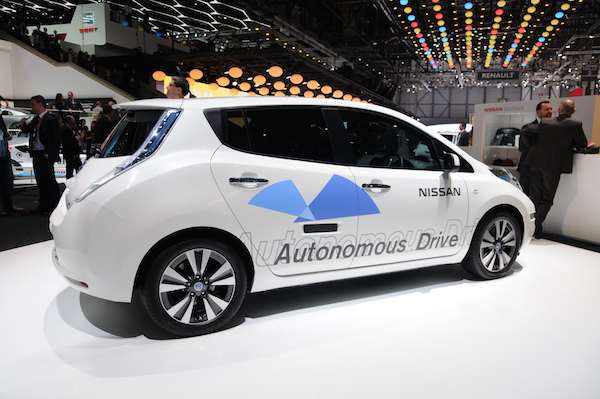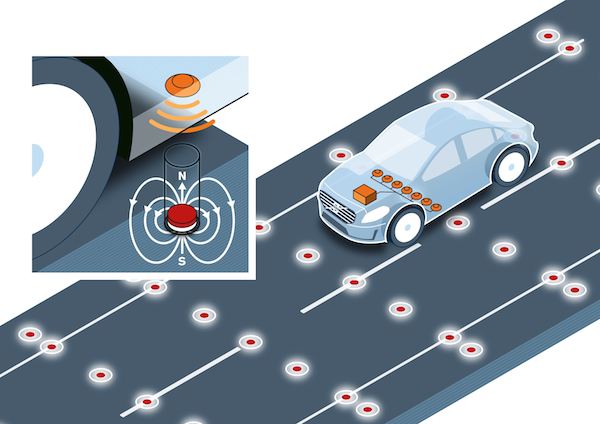
Volvo recently announced the completion of a research project to examine the feasibility of using road-equipped ferrite magnets, as indicated in the schematic above, to drive autonomous cars. Credit: Volvo Car Group.
I’ve long been waiting for a car that can drive itself. Just think of all that extra free time you’d gain—set the autopilot, and you can crawl in the backseat and take a nap. Ah, the lap of luxury.
Or, if you’re not tired and feeling more ambitious, just think of all you could do during your morning commute if you didn’t have to concentrate on the road. Autonomous cars would also make this ridiculous invention a moot point, thank goodness.
Well, wait no longer. Volvo Car Group just announced that it has completed a project researching the feasibility of road-integrated magnets, which are “a potential key to the implementation of self-driving vehicles,” states the Volvo press release.
“The magnets create an invisible ‘railway’ that literally paves the way for a positioning inaccuracy of less than one decimeter,” says Jonas Ekmark, Preventive Safety Leader at Volvo. “We have tested the technology at a variety of speeds and the results so far are promising.” I have to disagree with him—they’re not literally paving the way—but you get the idea.
For the test, Volvo equipped a 100-m-long track with round 40×15 mm ferrite magnets, 200 mm beneath the road, which the car detected with magnetic field sensors to determine road positioning. Although Volvo is short on the details, the tests must have gone well.
“Our experience so far is that ferrite magnets are an efficient, reliable, and relatively cheap solution, both when it comes to the infrastructure and on-board sensor technology. The next step is to conduct tests in real-life traffic,” explains Ekmark.
“It is fully possible to implement autonomous vehicles without changes to the present infrastructure,” he adds in the press release. “However, this technology adds interesting possibilities, such as complementing road markings with magnets.”
California seems to be thinking about these possibilities already, as the Department of Motor Vehicles is currently writing rules to regulate autonomous vehicles before 2014 closes. While other states already have laws governing the testing of driverless car, California is extending its regulations to public operation as well.
Google already had driverless cars that have traversed “hundreds of thousands of miles in California,” according to the Associated Press, so California may not be looking that far into the crystal ball.
(Full disclosure and full thanks to Billy Ocean for the headline inspiration!)
Feature image credit: Noebu (Wikimedia Creative Commons License).

